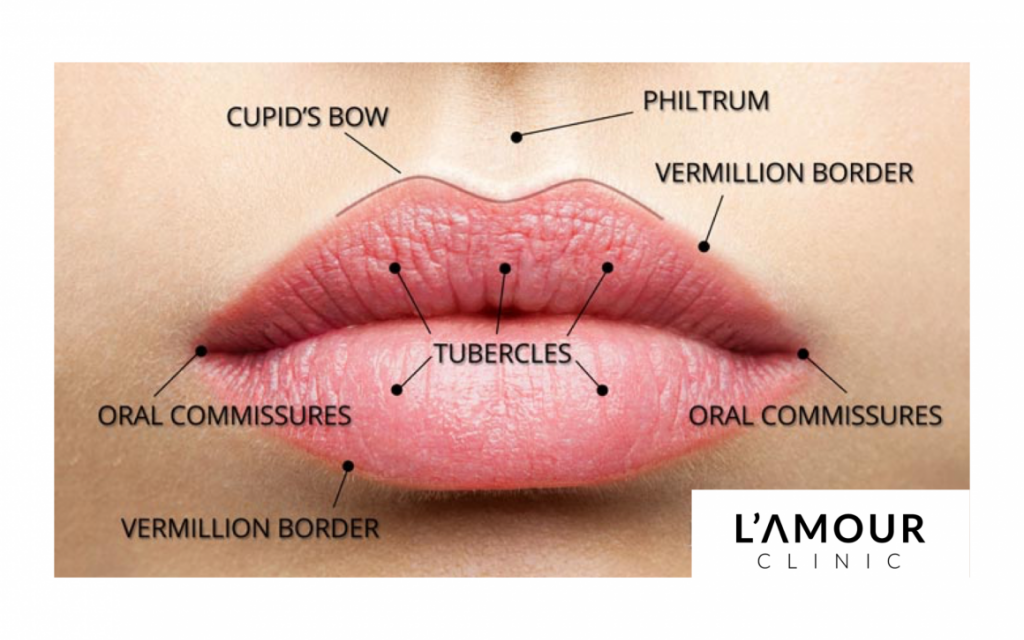With the popularity of lip fillers at an all time high, it is important to understand lip anatomy so that you can clearly explain your trouble areas and goals when visiting L’Amour Clinic.
Firstly, your lips are different to the rest of your skin:
1) Your lips have fewer layers of skin: Your lips only have three/four layers of skin, in comparison to 15/16 layers in other areas. This often means blood vessels underneath are more visible. Additionally, your lips do not have an upper layer of epidermis called the stratum corneum that serves as a protective layer against dehydration and UV radiation.
2) They do not have sebaceous glands: As your lips do not have sebaceous glands, they do not make sebum. Sebum coats, moisturizes, and protects your skin. Factors such as ageing, sun exposure and smoking will accelerate the thinning, loss of collagen and elastin of the lips. Therefore, hydrating your skin with a daily SPF lip balm is crucial to keeping them healthy as your lips are more prone to getting skin cancer than other areas due to the lack of sebum.
3) Lips lose fullness and shape with age: Collagen makes your lips firm and as we age and lose this so you will see the inevitable – your lips will not be as plump, fuller or defined. Injectable fillers give your lips a smooth and natural boost.
The above differences in anatomy makes lips thinner, softer and more susceptible to dehydration compared to your face and body skin.
Below is a visual aid to portray the different areas of the lip:

Although this is a very quick guide to lip anatomy, it will be helpful to have a basic understanding so that you can explain to your practitioner what parts you would like to focus on at L’Amour Clinic. Although your desired look may have limitations, a customised and informed consultation will help you achieve your cosmetic goal safely.
We are excited to hear your thoughts and hope this has been informative!
L’Amour Clinic

